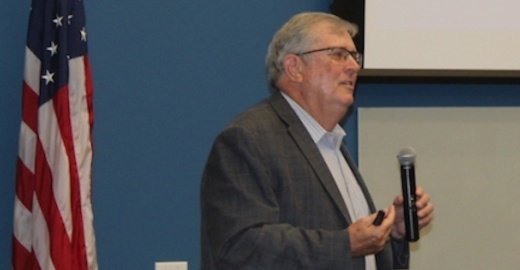“While there has absolutely been some academic decline, I do want to make it clear there's still a lot of great things happening in our classrooms day in and day out,” Rogers said.
The superintendent spoke Sept. 21 at the annual State of Education Luncheon, which took place at the district’s Technology, Exploration and Career Center, West campus. Students participating in classes at the center cooked and served lunch for the event, created table centerpieces and offered hair styling and manicures afterward.
While the district still sees active COVID-19 cases each week, Rogers said less than 0.5% of LISD students and staff had active cases as of Sept. 20.
“We have 49,000 students and nearly 5,000 staff [members] working in campuses,” Rogers said. “When you do that math, it doesn’t make sense to shut down the school system. Those kids need to be in person. They need to have a face-to-face education, if at all possible.”
Rogers said that the district can, and already has, closed down individual classrooms for virus outbreaks as a way to lower the spread but keep the schools open. Students in those classes receive virtual learning online for several days. In addition, every elementary and sixth grade class room has an individual air purification system. Each elementary school classroom is also electrostatically cleaned each night, he said. Students can also be tested for COVID-19 by the district’s nurses at no cost.
Because of the pandemic, the district is experiencing hiring shortages, Rogers said. The district has 50 teaching positions that have not been filled since the beginning of the school year, half of which, Rogers said, are special education teaching roles. There are also about 75-80 hourly employee roles that need to be filled.
“If you know a teacher and you see them in the next week, please thank them,” Rogers said. “It’s a phenomenal job that they're doing juggling everything they've been asked to do.”
The superintendent went on to say that despite virus-related setbacks, students are still meeting academic readiness standards. An estimated 91% of kindergarten students demonstrated overall readiness in literacy, he said. About 95% of middle school students met readiness standards by making a C grade or higher in all of their core classes, and 87% of high school students met state criteria for career and college readiness, he told the lunch crowd.
“We continue to move forward—that’s really what this is all about,” Rogers said. “It's one simple promise in all circumstances. It is to make sure that the future of our kids is a future that they create.”





